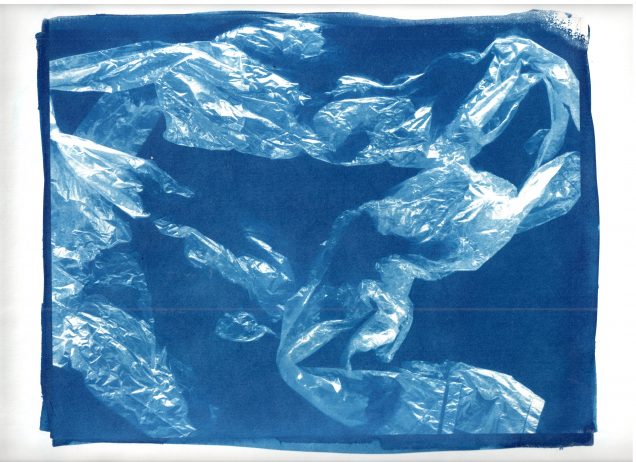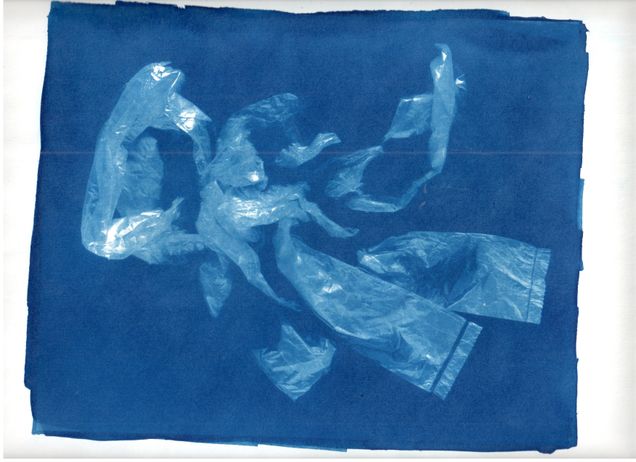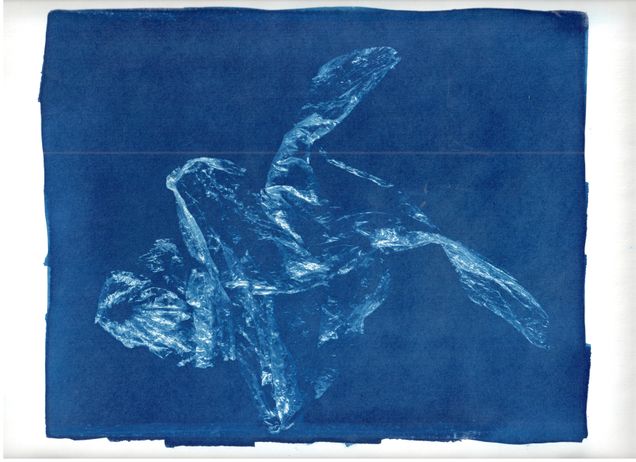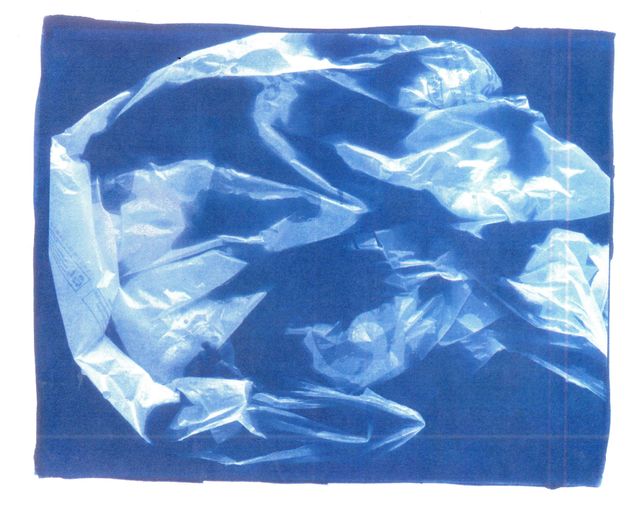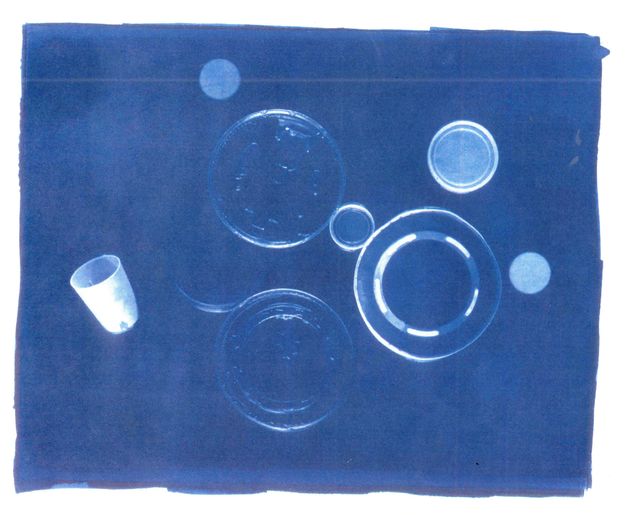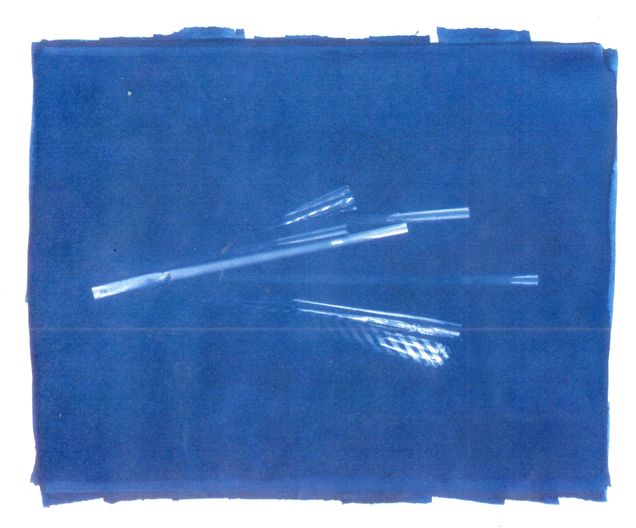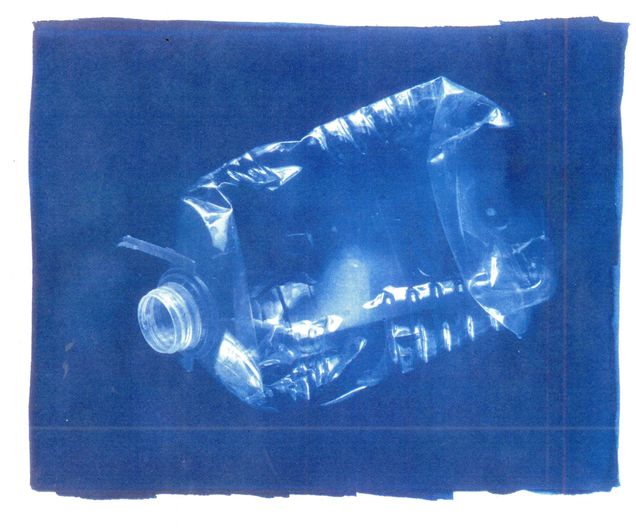Fauxssilles for the Future: Cyanotype Expressions on Plastic Waste
This project focuses on the emerging plastic waste problem in the marine environment through a photographic series. In order to create a visual reflection, the project highlights the relationship between found plastic objects and cyanotype photography. Cyanotype is most commonly known as technical “blueprints” and was also the technique of the first photographic book, made in 1843 by Anna Atkins. The photographed objects in this series were selected based on the Ocean Conservancy 2017 report, which details the most commonly found items on ocean shores. In my studio, plastic objects floating in cyan-blue spheres mimic the marine environment as a result of the Anthropocene.
The title “Fauxssilles” emphasizes the dual faux states of being. It refers both to the falseness of plastics’ expansion within the marine ecosystem around them, and to the fakeness of the photographed objects compared to real and natural fossils. In order to conceptually merge the photographed objects with their destined marine environment, digital negatives have been used instead of creating photograms. Thus the photograms illustrate floating, instead of the abstracted forms of two-dimensional exposure.
The photographs function as fossils conceptually since they both create and preserve traces. The project approaches the plastic objects with the consideration of a photograph as a “transparent window” to, or as an “evidence” of, reality. Considering the presence of a photograph is indicative of its subject’s absence, the project moves towards the concept of a fossil, where object and image portray one complete presence. “Fauxssilles” also refers to the object-subject parallelism of durability on a chemical level, as the cyanotype technique makes these prints (which are chemically durable for long periods) as resistant to decay as the photographed plastics (which are also highly durable unlike the biological organisms sharing the same marine environment). Both the print and the plastics can last up to thousands of years, merging the image and the material of a “Fauxssille” into one totality.
The creative process is inspired by Gestalt’s figure-background principle, which also refers to this relationship. In this photographic series, fossils are referred memory carriers and the storytellers of the past life, echoing that there would be more plastic than fish in the oceans by the year 2050. Through these visually informative and chemically durable cyanotypes, “Fauxssilles” highlights the inevitable fate of plastic waste in the marine environment. The project tries to visualize the “faux” transference of memory. Photographs as souvenirs have the function to envelop the present within the past. Accordingly, by encapsulating lived moments of today for the archeologists of the future, the series offers a new way of visualizing the plastic waste problem in order to be critically evaluated.
Naz Önen
____________________
